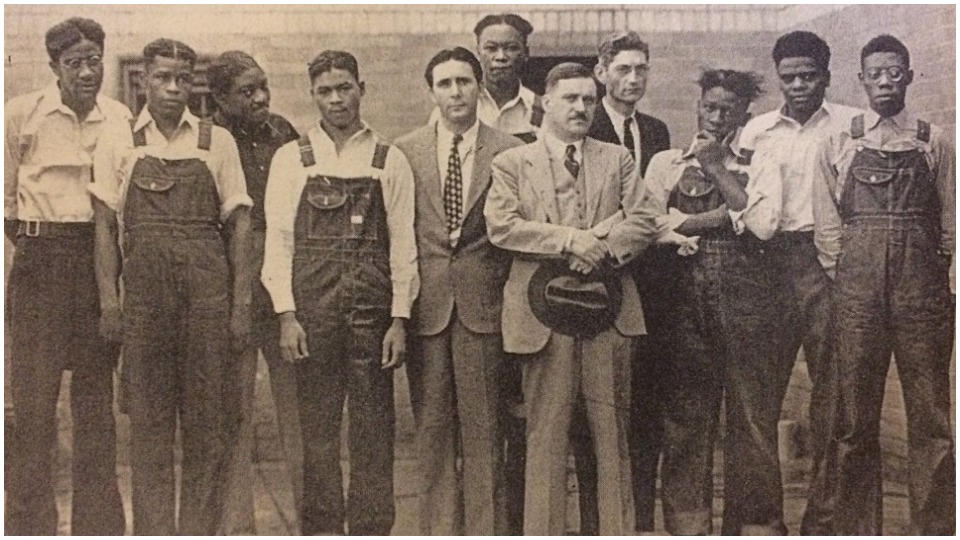
There have been a number of good books recently written about the Communist Party USA (CPUSA) and about individual Communists from a number of different and interesting angles. However, not since Robin Kelley’s classic Hammer and Hoe: Alabama Communists During the Great Depression, written 30 years ago, has the work of Alabama’s Communists been so vividly rendered—their lives, struggles, trials, and tribulations brought to life.
Mary Stanton’s Red, Black, White: The Alabama Communist Party, 1930-1950 is a concise, readable overview, a welcome contribution to the history of the CPUSA in District 17 (Alabama) and to the struggles it led against racism.
Stanton is correct when she writes: “The seeds of Black liberation, of the Student Non-Violent Coordinating Committee, Black Power, the Black Panthers, and Black Lives Matter can all be traced directly to the legacy of the Southern Negro Youth Congress…the ILD [International Labor Defense]…the League of Struggle for Negro Rights, the National Negro Congress, and the Civil Rights Congress,” all organizations led by Communists.
While many Alabama “whites tended to either detest the Reds or to dismiss them as integration-preaching atheists,” African Americans “were more likely to accept them,” she adds. Additionally, Alabama’s Black population, even those “who never officially joined the party admired the Reds for their courage and their commitment to social justice.”
The CPUSA’s record fighting for African American equality and Black liberation is largely unquestioned today, at least among honest historians. However, even if that fact is largely acknowledged, many people—sincere activists, union members, students, and others—aren’t fully aware of the various struggles Communists often initiated and led, especially in the South, an area of the country still harboring many of the most racist, most reactionary, most anti-democratic elements in our society.
A central component of the CPUSA’s work in Alabama was the fight against lynching, both legal and vigilante lynching. Of course, the legal defense of and mass protests for the freedom of the Scottsboro Nine is but one prominent example; the defendants were nine Black youths falsely accused of raping two white women. It is now indisputable that without the aid of the CPUSA’s legal defense arm, the International Labor Defense led by the Black Communist William L. Patterson, the Scottsboro Nine would have been killed, legally lynched by an all-white jury.
Less well known, however, are the Angelo Herndon case, the Camp Hill Massacre, the Shades Mountain Rape and Murder, the lynching, beating, flogging and jailing of Sharecroppers Union leaders, among numerous other examples. Also less well known is the role of Communists in publicizing and organizing legal defense, protection, and relief for both Black and white Alabama workers. Stanton weaves all of these disparate events and movements together into one cohesive and readily digestible narrative.
Stanton also does a good job describing the racist backlash against African Americans and Communists as they fought for equality. She highlights the collusion between local police, sheriffs, prosecutors, judges, and plantation owners, many of whom also happened to be members of the Ku Klux Klan, the Citizen’s Protective League, and other white supremacist groups.
Stanton also briefly discusses the shifts in CPUSA policy as Communists transitioned from the establishment of Red Unions, to Popular Front organizing, to the Molotov–Ribbentrop Pact, to World War II, and how these shifts impacted comrades in District 17. The CPUSA’s role in establishing and leading the Southern Conference for Human Welfare—which included Communists like Joe Gelders, Rob Hall and Hosea Hudson, among others—is a prime example of the Party’s ability to utilize diverse tactics, build alliances and put aside overly revolutionary rhetoric with the goal of winning immediate demands as part of broad coalitions.
I have two qualms with an otherwise excellent book. Throughout the narrative Stanton could have done more to let the participants speak for themselves by utilizing more direct quotations; and a quick glance at the source notes reveals that Stanton cited little documentation, though archival collections, oral histories, and other bibliographic sources are listed elsewhere. For those interested in diving a little deeper into this history, Stanton would have done well to provide more information in the notes section.
Despite these minor quibbles, Stanton has done a masterful job of presenting a highly important and largely forgotten history. Readers eager for a compact and well-written overview of the history of the subject should pick up Red, Black, White: The Alabama Communist Party, 1930-1950.
Red, Black, White: The Alabama Communist Party, 1930-1950
By Mary Stanton
University of Georgia Press, 2019, 240 pages
ISBN: 9-780-8203-5617-4
List Price: $29.95
Like free stuff? So do we. Here at People’s World, we believe strongly in the mission of keeping the labor and democratic movements informed so they are prepared for the struggle. But we need your help. While our content is free for readers (something we are proud of) it takes money — a lot of it — to produce and cover the stories you see in our pages. Only you, our readers and supporters, can keep us going. Only you can make sure we keep the news that matters free of paywalls and advertisements. If you enjoy reading People’s World and the stories we bring you, support our work by becoming a $5 monthly sustainer today.










